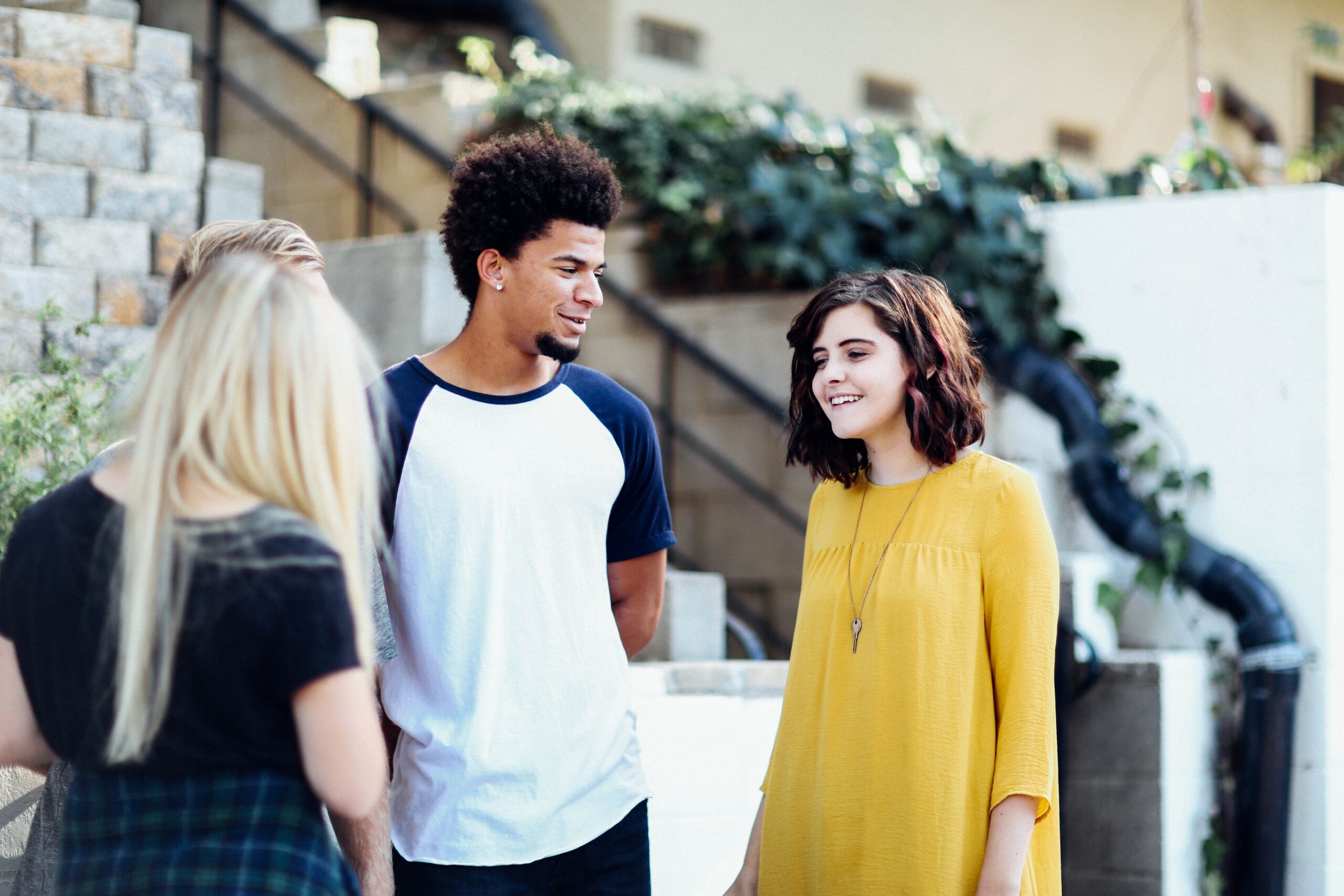
Matt Richtel
M, a #teenager struggling with #depression, on their phone in a Minneapolis suburb, on Oct. 29, 2021.
One evening last April, an anxious and free-spirited 13-year-old girl in suburban Minneapolis sprang furious from a chair in the living room and ran from the house — out a sliding door, across the patio, through the backyard and into the woods.
Moments earlier, the girl’s mother, Linda, had stolen a look at her daughter’s smartphone. The #teenager, incensed by the intrusion, had grabbed the phone and fled. (The #adolescent is being identified by an initial, M, and the #parents by first name only, to protect the family’s privacy.)
Linda was alarmed by photos she had seen on the phone. Some showed blood on M’s ankles from intentional self-harm. Others were close-ups of M’s romantic obsession, the anime character Genocide Jack — a brunette #girl with a long red tongue who, in a video series, kills #highschool classmates with scissors.
In the preceding two years, Linda had watched M spiral downward: severe #depression, self-harm, a #suicideattempt. Now, she followed M into the woods, frantic. “Please tell me where u r,” she texted. “I’m not mad.”
#American #adolescence is undergoing a drastic change. Three decades ago, the gravest public health threats to #teenagers in the #UnitedStates came from binge drinking, drunken driving, #teenage pregnancy and smoking. These have since fallen sharply, replaced by a new public health concern: soaring rates of #mentalhealthdisorders.
In 2019, 13% of #adolescents reported having a major depressive episode, a 60% increase from 2007. Emergency room visits by #children and #adolescents in that period also rose sharply for #anxiety, mood disorders and self-harm. And for people ages 10-24, #suicide rates, stable from 2000-07, leaped nearly 60% by 2018, according to the #CentersforDiseaseControlandPrevention.
The decline in #mentalhealth among #teenagers was intensified by the #COVID-19 #pandemic but predated it, spanning #racial and #ethnic groups, urban and #ruralareas and the socioeconomic divide. In December, in a rare public advisory, the U.S. surgeon general warned of a “devastating” #mentalhealthcrisis among #adolescents. Numerous hospital and #doctor groups have called it a national emergency, citing rising levels of #mentalillness, a severe shortage of #therapists and treatment options, and insufficient research to explain the trend.
“Young people are more educated; less likely to get pregnant, use drugs; less likely to die of accident or injury,” said Candice Odgers, a #psychologist at the University of California, Irvine. “By many markers, #kids are doing fantastic and thriving. But there are these really important trends in #anxiety, #depression and #suicide that stop us in our tracks.”
“We need to figure it out,” she said. “Because it’s life or death for these #kids.”
The crisis is often attributed to the rise of #socialmedia, but solid data on the issue is limited, the findings are nuanced and often contradictory, and some #adolescents appear to be more vulnerable than others to the effects of screen time. Federal research shows that #teenagers as a group are also getting less sleep and exercise and spending less in-person time with friends — all crucial for healthy development — at a period in life when it is typical to test boundaries and explore one’s identity. The combined result for some #adolescents is a kind of cognitive implosion: #anxiety, #depression, compulsive #behaviors, self-harm and even #suicide.
This surge has raised vexing questions. Are these issues inherent to #adolescence that merely went unrecognized before — or are they being over-diagnosed now? Historical comparisons are difficult, as collection of some data around certain issues, such as #teen #anxiety and #depression, began relatively recently. But the rising rates of ER visits for #suicideattempts and self-harm leave little doubt that the physical nature of the threat has changed significantly.
As M descended, Linda and her husband realized they were part of an unenviable club: bewildered #parents of an #adolescent in profound distress. Linda talked with #parents of other struggling #teenagers; not long before the night M fled into the forest, Linda was jolted by the news that a local #girl had died by #suicide.
“You have no control over what they’re thinking,” Linda said. “I just want to tell people what can happen.”
#James Donaldson notes:
Welcome to the “next chapter” of my life… being a voice and an advocate for #mentalhealthawarenessandsuicideprevention, especially pertaining to our younger generation of students and student-athletes.
Getting men to speak up and reach out for help and assistance is one of my passions. Us men need to not suffer in silence or drown our sorrows in alcohol, hang out at bars and strip joints, or get involved with drug use.
Having gone through a recent bout of #depression and #suicidalthoughts myself, I realize now, that I can make a huge difference in the lives of so many by sharing my story, and by sharing various resources I come across as I work in this space. #http://bit.ly/JamesMentalHealthArticle
Order your copy of James Donaldson's latest book,
Celebrating Your Gift of Life:
From The Verge of Suicide to a Life of Purpose and Joy
‘A Typical Outpatient’
M is one of dozens of #teenagers who spoke to The #NewYorkTimes for a yearlong project exploring the changing nature of #adolescence in the #UnitedStates. The Times was given permission by M and the family to speak with M’s #school #counselor; M’s medical records were shared with the Times and, with the family’s permission, reviewed by outside experts not involved in M’s care.
“This is a typical outpatient,” said Emily Pluhar, a #child and #adolescent #psychologist at Harvard University, describing M as “an internalizer.”
M, now 14, is tall, with red hair and blue eyes, and has a younger sister and older half brother. By turns shy and outspoken, M has thought extensively about pronouns and currently prefers “they.” At the beginning of seventh grade, M also asked to be called by the name of a popular Japanese anime character, whose first name starts with M. “I think we’re similar in that she’s, like, quiet and smart and plays electric bass, and I really like bass and guitars,” M said.
When M was 4, a #psychologist the family consulted to assess M’s #school readiness concluded that their “intellectual ability is in the very superior range,” according to the report. M was enrolled in kindergarten as one of the younger class members.
At 10, M got a smartphone. Linda and her husband, Tony, both of whom had busy work schedules, worried that the device might lead to heavy screen time, but they felt it was necessary to stay in touch. At 11, M hit another #adolescent milestone: puberty.
Over the past century, the age of puberty onset has dropped markedly for #girls, to 12 years old today from 14 years old in 1990; the age of onset for #boys has followed a similar path. Experts say this shift probably now plays a role in the #adolescent #mentalhealthcrisis, although it just one of many factors that researchers are still working to understand.
When puberty hits, the brain becomes hypersensitive to social and hierarchical information, even as media flood it with opportunities to explore one’s identity and gauge self-worth. Laurence Steinberg, a #psychologist at Temple University, said that ability to maturely grapple with the resulting questions — Who am I? Who are my friends? Where do I fit in? — typically lags behind.
The falling age of puberty, he said, has created a “widening gap” between incoming stimulation and what the young brain can process: "They’re being exposed to this deluge at a much earlier age.”
M’s first hint of trouble came in sixth grade, with challenges focusing in class. The #school called a meeting with M’s #parents. One #teacher suggested testing M for attention deficit hyperactivity disorder, but Linda and Tony were skeptical. The number of #ADHD diagnoses in the #UnitedStates rose 39% from 2003-16, according to the #CDC, and M’s #parents, both scientists in biomedical fields, were concerned that consulting an #ADHD specialist would tilt the scales toward that diagnosis.
Instead, Linda tried to help M stay organized with an app that #parents and #students used to track assignments, test scores and grades. M felt put under a microscope.
“She would say, ‘Can you bring me your iPad so we can check Schoology?’” M recalled about Linda. “I would literally have an #anxiety attack because I was so scared.”
By the fall of 2019 — seventh grade — M was struggling socially, too. A close friend got popular, while M often came home from #school and got into bed. “I felt like a 'plus one,'” M said. “I just wanted to be unconscious.” Other times, M said, “I just sat in my room and cried.”
The #behavior seemed alien to Tony, who had lived a different childhood. As an #adolescent in Vermont in the 1980s, he fished and played outdoors. By 15, he had his first serious girlfriend; in 1990, the summer before their senior year, he got her pregnant. Their son was born that December, and Tony and the mother shared custody.
Times have changed. Federal research shows that 38% of #highschool-age #teenagers report having had sex at least once, compared with roughly 50% in 1990. The #teen birthrate has plummeted.
So has cigarette and #alcohol use. In 2019, 4% of #highschool seniors reported having a cigarette in the last 30 days, down from 26.5% in 1997. #Alcohol use by high schoolers hit 30-year lows at the same time. Use of OxyContin and other illicit drugs among high schoolers is down sharply over the past 20 years. Vaping of both nicotine and marijuana has risen in recent years, although both dropped sharply during the #pandemic.
Experts cite multiple factors: public awareness campaigns, anti-smoking laws, parental oversight and a changing social lifestyle that is no longer strictly in-person.
Nora Volkow, director for the National Institute on Drug Abuse, described #drug and #alcohol use as “very much of a group dynamic.” She added: “To the extent that #kids are not in the same place, one would expect a decrease in the #behavior.”
A Virtual Crush
In the spring of 2020, M retreated further. Bewildered by online classes, M lied about participating, felt guilty and watched YouTube instead, devouring an anime series called “Danganronpa.” It is set in a high #school where students learn from the evil headmaster, a bear, that the only way to graduate is to kill a peer.
M became enamored of one of the characters, Genocide Jack (sometimes known as Genocide Jill), who is described on one fan site as a witty “murderous fiend” who “kills handsome men” using scissors.
One night after dinner, M was upstairs and used scissors to cut both ankles. “I was mad at myself for not doing homework,” M said. “I was kind of thinking, ‘Oh, the pain feels good,’ like it was better than being stressed.” M couldn’t recall where the idea came from: “I wanted to hurt myself with anything.”
M’s #parents noticed superficial scratches on M’s thighs that resembled cuts but did not raise the subject. Linda worried about the screen time, but “it was #pandemic,” she said.
When #school ended for summer break, M’s mood improved. Over the summer, M discovered the mobile version of the Danganronpa video game and how to override the parental screen limits. M played all day.
“I was in front of my screen staring at Jack,” M said. “Then I was playing Trigger Happy Havoc, and I was, like, more in love.”
“I was kind of just lonely,” M said. M fantasized about the future with Jack: “I’d want her to almost kill me but not, and then we could spend the rest of our lives together.”
An obsession with a virtual character is not uncommon, experts said. “This is a #kid who is a bit lonely, a bit caught up in these narratives,” said Nick Allen, a #psychologist at the University of Oregon. “There’s nothing new in coming up with stuff that freaks out their #parents.”
Nonetheless, he added, “extremely powerful” online experiences such as these can encourage users to think, “That is going to be my identity, my sense of the future, my sense of where I belong socially,” at a time when one’s identity is a work in progress.
Pluhar of Harvard noted that “the challenge and the progress” of modern #adolescence “is there are so many types of identity” — more choices and possibilities, which in turn could be overwhelming. Among the factors shaping #mentalhealth, Pluhar said, is the mind’s churning and obsessing: “Rumination is a big piece of it.”
M had a name for the main source of their #mentalhealthchallenges: “#Loneliness.”
Elaniv
Health experts note that, for all its weight, the #adolescent crisis at least is unfolding in a more accepting environment. #Mentalhealthissues have shed much of the #stigma they carried three decades ago, and #parents and #adolescents alike are more at ease when discussing the subject among themselves and seeking help.
Indeed, Linda had begun having conversations with other #parents who wondered whether the challenges their #adolescents were facing represented typical moody #teen #behavior or something pathological. A colleague told Linda about her daughter’s #eatingdisorder. A mother named Sarah confided that her middle #school-age #daughter was in therapy for #anxiety and #depression. “I told her, ‘I understand where you’re at way better than you think,’” Sarah recalled.
In a nearby suburb, the #parents of Elaniv Burnett were struggling to understand their daughter’s desperation. As a young #child, Elaniv had been joyful, an eager #student and graceful gymnast, her father, Dr. Tatnai Burnett, a gynecological surgeon at the Mayo Clinic, recalled: “The kind of #kid where you go, ‘Huh, we should have more #kids.’”
But in 2014, when Elaniv was 9, her parents’ marriage began to fracture, and Elaniv injured her ankle; she developed chronic pain, which sidelined her from gymnastics, and she went through a dark period. Then, in 2016, Dr. Burnett, who is #Black, was held at gunpoint at home by the #police, in full view of the family, after officers responded to a call of a possible intruder.
Recent research has found that wealth, education and opportunity do not shield #Black families from #mentalhealthissues to the same degree they do for white families. From 1991 to 2017, #suicideattempts by #Black #adolescents rose 73%, compared with an 18% rise among #white #adolescents. (The overall #suicide rate remains higher among white adolescents.) The #suicide rate leaped particularly for #Black #girls, up 6.6% per year on average from 2003-17, new research shows.
In the fall of 2019, Elaniv was diagnosed with major depressive disorder. In a poem in her journal, she wrote: “Thoughts like race cars zoom constant in my head / Self-hate and worthlessness / Perpetual, they speed ahead.”
Elaniv began therapy, took medications and enrolled in an outdoor inpatient program in Utah. “We worked on ourselves, worked on our parenting, we changed so many things to try to help meet Elaniv where she was,” Burnett said. “We controlled electronics, monitored friendships.”
Elaniv’s mother, Tania Gainza, a clinical #socialworker, saw a generational trend. She had counseled an #adolescent for years who was terrified of not meeting expectations. She heard about a local boy who killed himself seemingly without warning.
“There’s something different about this era or generation that makes them much more susceptible or vulnerable,” Gainza said. “There’s not that community, I guess.”
A rise in #loneliness is a key factor, experts said. Recent studies have shown that #teenagers in the #UnitedStates and worldwide increasingly report feeling lonely, even in a period when their internet use has exploded.
“They’re hanging out with friends, but no friends are there,” said Bonnie Nagel, a #psychologist at the Oregon Health & Science University. “It’s not the same social connectedness we need and not the kind that prevents one from feeling lonely.”
Often, she said, online social connections amount to seeing “pictures of people hanging out, flaunting it, as if to say, ‘Hey, I’m very socially connected’ and ‘Hey, look at you by yourself.’”
The #Pandemic Factor
One day in the fall of 2020, with the #pandemic in full swing and eighth grade having gone fully remote, Linda found M sobbing in bed. M confessed to wanting to die.
Linda found an online #therapist. After several sessions, “the #therapist broke confidentiality,” Linda said. “She said, ‘You need to know about the knife.’”
In M’s night stand, Tony found a pocketknife and a box knife with a cat’s paw image on the handle that M had surreptitiously bought on Amazon and was using to self-harm. One night, M went further, tightening a red hair tie around their neck. “I was trying to see how far I could take it,” M said.
The following February, M entered full-day group therapy. A #psychiatrist at the clinic notified the family that M had admitted to being unable to stop cutting, medical records show. Linda “de-knived the house,” she said, and hid all the pills. Then M engaged in a different kind of self-harm: hitting their head with an 8-pound workout barbell.
Linda recalled feeling stunned: “Oh, now I have to get rid of the blunt objects, too.”
M was discharged with a diagnosis of #depression and a prescription for antidepressants. From 2015-19, prescriptions for antidepressants rose 38% for #teenagers compared with 15% for #adults, according to Express Scripts, a major mail-order pharmacy.
Subsequently, M also received a diagnosis of #attentiondeficitdisorder, not #ADHD, and given a prescription for methylphenidate, the generic name for medications including Ritalin and Concerta. “I’m still not sure I believe it,” Linda said.
M’s middle #school has a trained #mentalhealthcounselor. In March 2021, M visited him for the first time. During that visit, on a scale of 0 to 10, M ranked #hopelessness and #anxiety at 9, expressing terror at returning to #school, a fear of falling behind and a wish to die.
But M’s mood improved; at a meeting a month later, M ranked #hopelessness and sadness at 5 and anxiousness at 2. M felt therapy was crucial but wasn’t sure the medications helped; the #school #counselor credited M’s improvement to family support and getting back to #school. He cautioned the #parents, though, that the pendulum could swing back.
Into the Forest
Around that time, Linda heard through the grapevine that a #girl named Elaniv Burnett had died following an overdose. “I’m sorry, I can’t take it anymore,” Elaniv wrote in a note. Her mother rushed her, still conscious, to the hospital, where Elaniv expressed regret at the overdose and described her terror. She died four days later, at age 15.
The news was still on Linda’s mind a few weeks later when M fled into the forest.
M’s family had recently returned from visiting both sets of grandparents. One set criticized M’s pronouns, the other M’s heavy screen use. Linda said she felt judged. She stole a look at M’s phone and saw the troubling photos.
“Let’s go for a walk,” she said to M and went upstairs briefly. When she returned, M had vanished, so she followed M into the woods, texting as she frantically looked for flashes of M’s white dress.
Finally, M texted back: “I don’t want to talk to you.”
Linda returned home, and Tony went out. He found M along a commonly used trail. They walked, mostly in silence. “Then they were ready to come home,” he recalled.
The #school year ended, and M improved, the #anxiety ebbing. M took joy spending time with a friend, in person, walking home, strolling the forest.
But a few weeks later, a hurtful text from the friend plunged M into despair again, “like I was back to having no friends.”
M used an exfoliating blade to cut both ankles. “I don’t know how to stop it,” M said.
https://standingabovethecrowd.com/?p=9226





